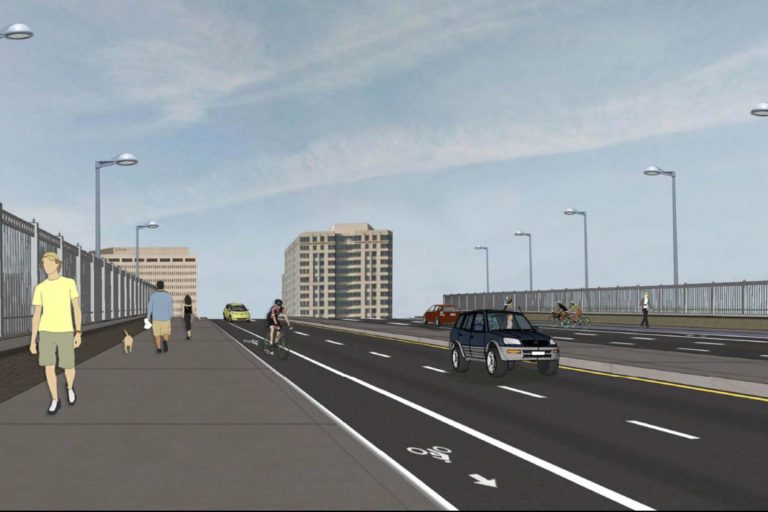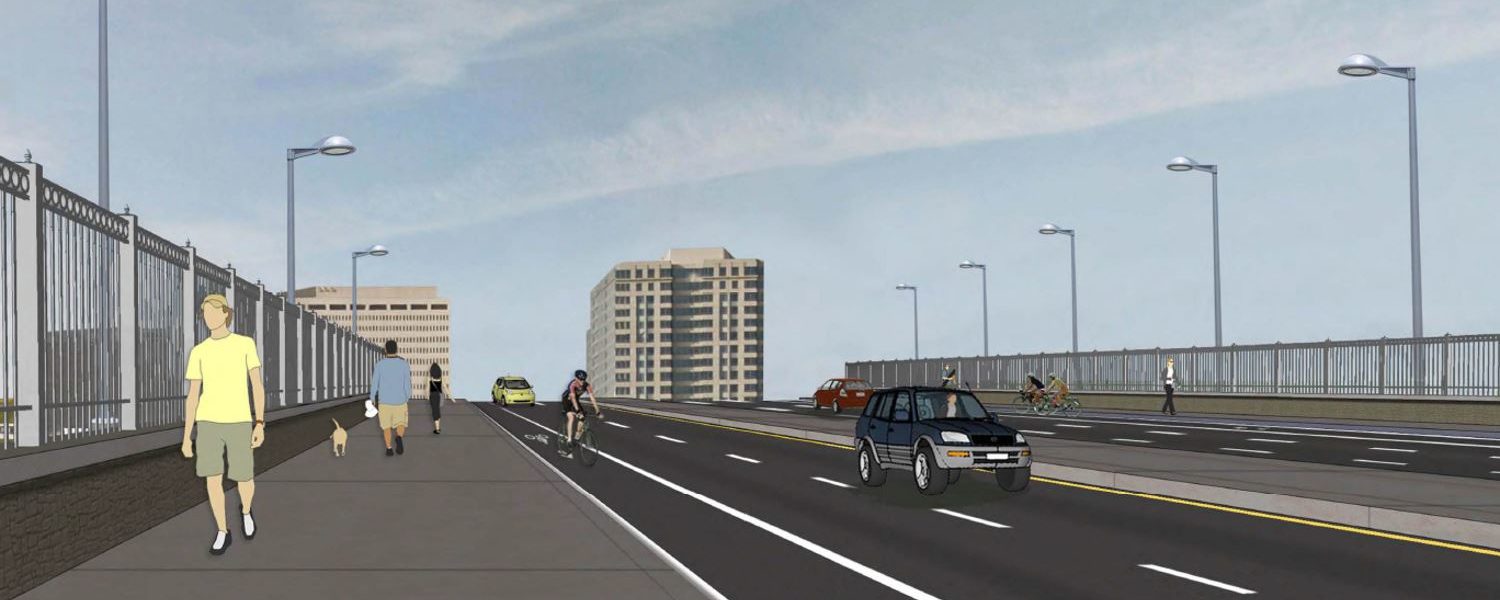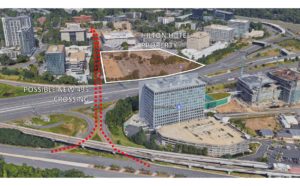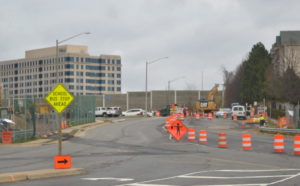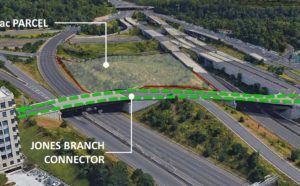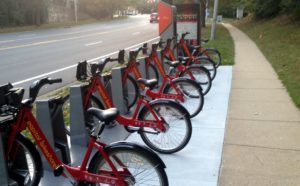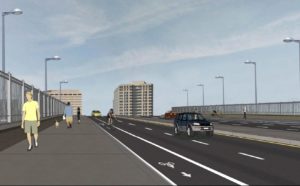Since beginning to cover the VDOT/FCDOT plans for the Jones Branch Connector several years ago, there has been a lot of good conversation about how to improve on the plans. More than once there have also been questions on why it is so important. Although I tried to explain the importance of the connection without slipping into technical jargon, I feel I’ve done a disservice in not giving an overview of the project location and graphics showing what problem it solves.
Anyone who has traveled during the afternoon rush hour in eastern Tysons is well aware of the disaster that occurs at the intersection of Route 123 and Tysons Boulevard. The triple left turn disaster of commuters trying to weave and merge to 495 on-ramp, often clogged itself, causes complete gridlock at this critical intersection in Tysons. Of course, if all of the traffic from east Tysons was trying to get on 495, then a project like the Jones Branch Connector wouldn’t help much. However, the reality is that a significant amount, perhaps a majority of commuters, are only passing through this intersection and remaining on local roadways. For this large volume of drivers, the jam at this critical intersection causes delays and stacking which creates failing conditions upstream at Westpark Drive and Galleria Drive.
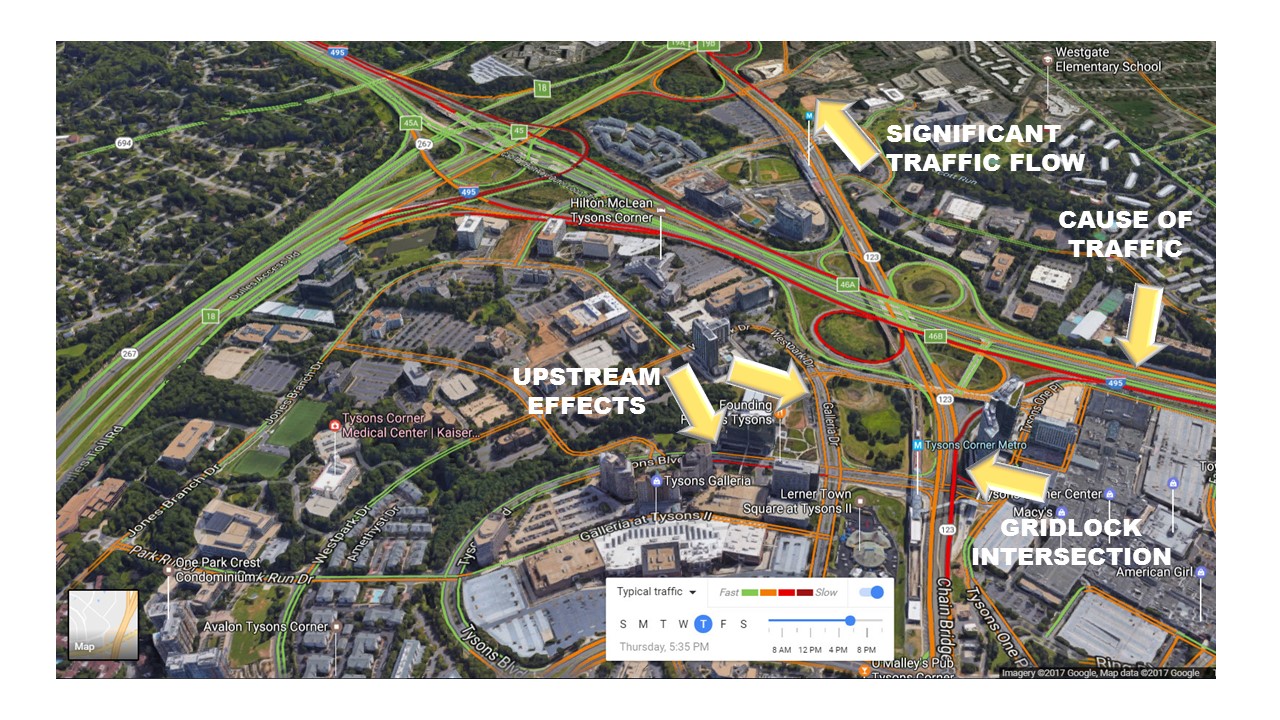
When the Jones Branch Connector is built, the 495 link will not get better — although, a heads up, you can get on the HOT lanes from the existing ramp at Jones Branch. What will get better is a significant amount of demand currently funneled to the Route 123/Tysons Boulevard intersection will have an option to avoid the area altogether. This avoidance will draw a huge number of vehicles away from those who are trying to get on 495 and will reduce the possibility of a traffic jam spreading into the central parts of Tysons, as it does on a daily basis currently.
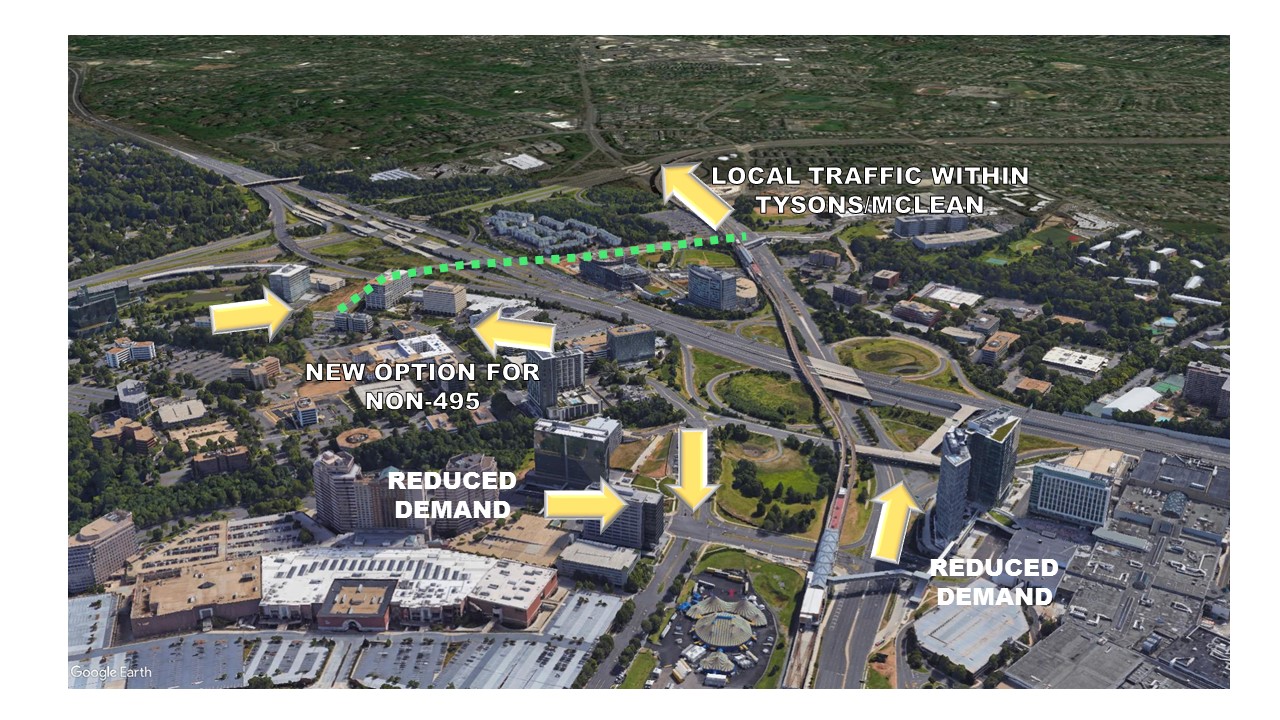
The Jones Branch Connector, as important as it is, won’t solve everything. Currently, there are only 2 effective E-W connections between Tysons and McLean/parts east. One way to capitalize on the new grid link would be to expand upon it, with a new McLean-Tysons road connection which would run parallel to Route 123, similar to the current alignment of Chain Bridge Road. A connection like this would help with the morning and afternoon traffic that has been getting worse along this stretch of Route 123. Although some right-of-way acquisition would be necessary, because of some of the cul-de-sacs and suburban roads in place, it could be limited.
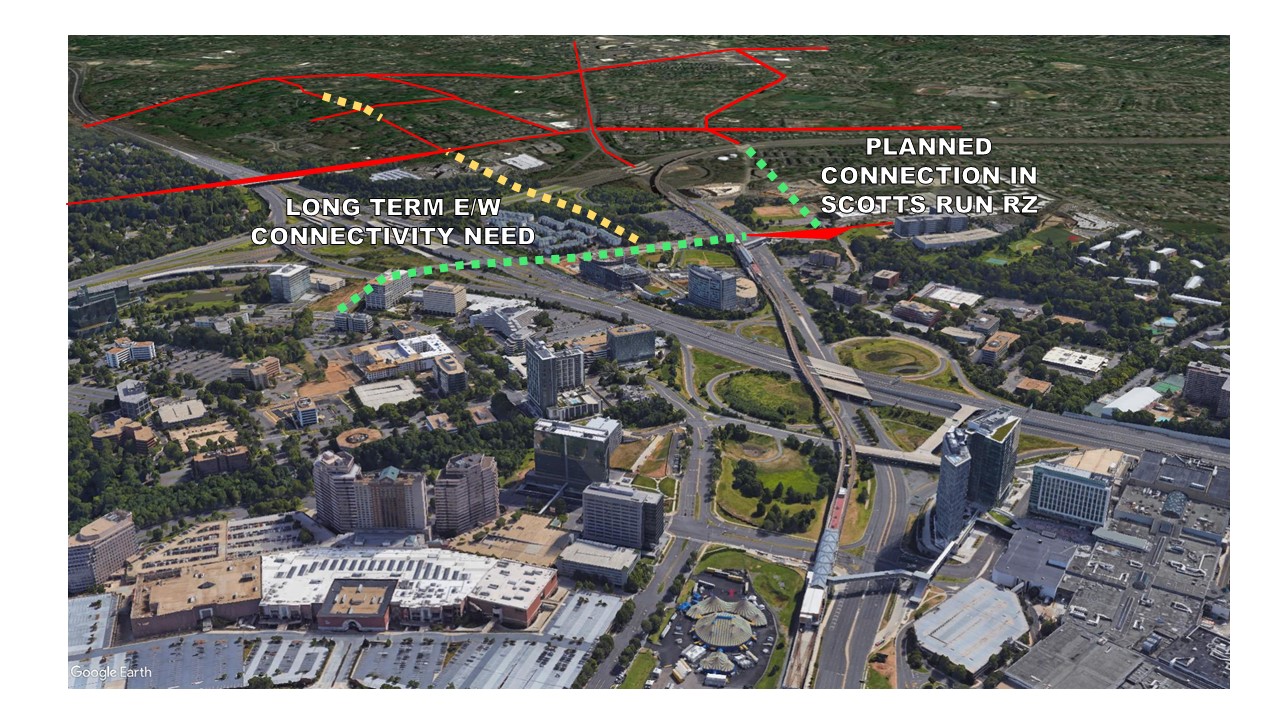
Although Tysons is moving towards a future of transit-oriented development, vehicle traffic is still the majority of commuter trips. This is better served by finding new pathways to split demand, rather than to continue to widen bottlenecked funnels infinitum. Several well designed, more urban intersections, can help move as many vehicles and be safer for non-vehicle users. That’s why any new road, connecting previously disconnected suburban dead ends, is a good thing for urbanism in Tysons.

